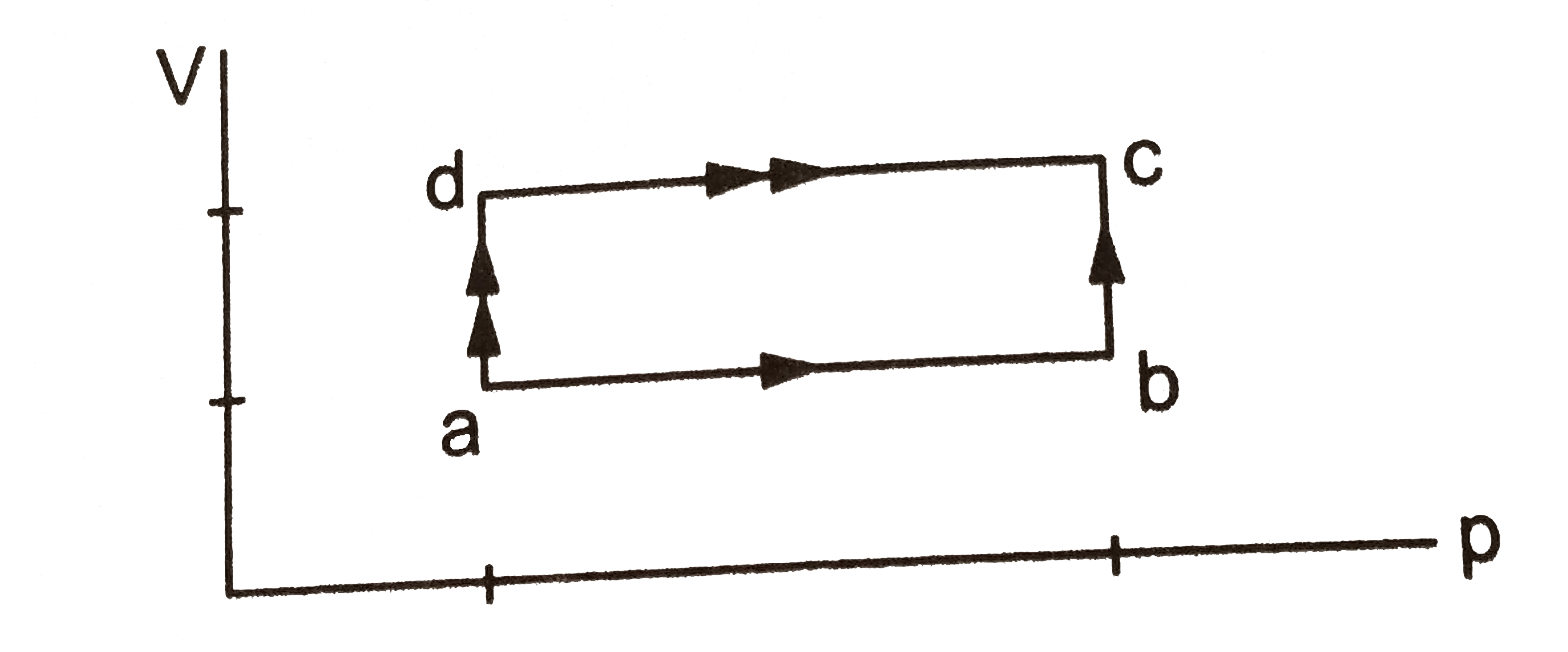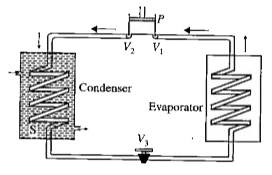What is ΔE for system that does 500 cal of work on surrounding and 300 cal of heat is absorbed by the system ?
−200cal
−300 cal
+200 cal
+300 cal
The correct Answer is:A
To find the change in internal energy (ΔE) for the system, we will use the first law of thermodynamics, which states:
ΔE=Q−W
where:
- ΔE is the change in internal energy,
- Q is the heat absorbed by the system,
- W is the work done by the system on the surroundings.
1. Identify the values given in the problem:
- Work done by the system on the surroundings: W=500cal (since the system does work on the surroundings, this value is considered negative in our equation).
- Heat absorbed by the system: Q=300cal (since heat is absorbed, this value is positive).
2. Assign the correct signs to the values:
- Since the system does work on the surroundings, we take W=−500cal.
- The heat absorbed by the system is Q=+300cal.
3. Substitute the values into the first law of thermodynamics equation:
ΔE=Q−W
ΔE=300cal−(−500cal)
4. Simplify the equation:
ΔE=300cal+500cal
ΔE=800cal
5. Calculate the final value of ΔE:
ΔE=800cal
Final Answer:
The change in internal energy (ΔE) for the system is 800cal.
- ΔE is the change in internal energy,
- Q is the heat absorbed by the system,
- W is the work done by the system on the surroundings.
- Work done by the system on the surroundings: W=500cal (since the system does work on the surroundings, this value is considered negative in our equation).
- Heat absorbed by the system: Q=300cal (since heat is absorbed, this value is positive).
- Since the system does work on the surroundings, we take W=−500cal.
- The heat absorbed by the system is Q=+300cal.
ΔE=Q−W
ΔE=300cal−(−500cal)
ΔE=300cal+500cal
ΔE=800cal
ΔE=800cal
The change in internal energy (ΔE) for the system is 800cal.
Topper's Solved these Questions
- THERMODYNAMICSBOOK - VMC MODULES ENGLISHCHAPTER - THERMODYNAMICSEXERCISE - LEVEL-2
50 Videos
- THERMODYNAMICSBOOK - VMC MODULES ENGLISHCHAPTER - THERMODYNAMICSEXERCISE - LEVEL-2 (NUMERICAL VALUE TYPE)
15 Videos
- THERMODYNAMICSBOOK - VMC MODULES ENGLISHCHAPTER - THERMODYNAMICSEXERCISE - LEVEL-0 (LONG ANSWER TYPE (5 MARKS))
6 Videos
- THERMOCHEMISTRYBOOK - VMC MODULES ENGLISHCHAPTER - THERMOCHEMISTRYEXERCISE - JEE ADVANCED (ARCHIVE)
31 Videos
- THERMODYNAMICS & THERMOCHEMISTRYBOOK - VMC MODULES ENGLISHCHAPTER - THERMODYNAMICS & THERMOCHEMISTRYEXERCISE - Impeccable
48 Videos
Similar Questions
In a process, a system does 140 J of work on the surroundings and only 40 J of heat is added to the system, hence change in internal energy is
View SolutionDuring a process, the internal energy of the system increases by 240kJ while the system performed 90kJ of work on its surroundings. How much heat was transferred between the system and the surroundings during this process. In which direction did the heat flow?
View SolutionA system does 100J work on surroundings by absorbing 150J of heat. Calculate the change in internal energy.
View SolutionA system transfers 20 kJ of heat to the surroundings. Write the value of q for both the system and surroundings.
View SolutionWhat is the value of ΔE when the work done by the system is equal to the heat absorbed by the system?
View Solutionwhen a system is taken through the process abc shown in the fig. 80 J of heat is absorbed by the system and 30 J of work is done by it. If the system does 10 J work during the process adc, how much heat flows into it during the process ?

View Solutiona thermodynamic system is taken from the state i to statef along the path iaf. It is found that the heat absorbed by the system is 40 cal and work done by the system is 16.19 cal. Along the path i bf, the heat absorbed is 35 cal.
(a) Find the work done along the path i bf.
(b) If W = - 10 cal for the curved return path fi, what is for this path ?
(c) Take Ub=20cal, what is Uf?
(d) If Ub=20 cal, what is for the process ib?

View SolutionA system consisting of one mole of an ideal diatomic gas absorbs 200J of heat and does 50J of work on surroundings. What is the change in temperature if vibrational modes of motion are inactive?
View SolutionWhat would be the heat absorbed by the system in the cyclic process?
View SolutionWhen a system is taken from state A to state B along path ACB as shown in figure below, 80J of heat flows into the system and the system does 30J of work.

If ED−EA=−40J, the heat absorbed in the processes AD and DB are respectively
View Solution
